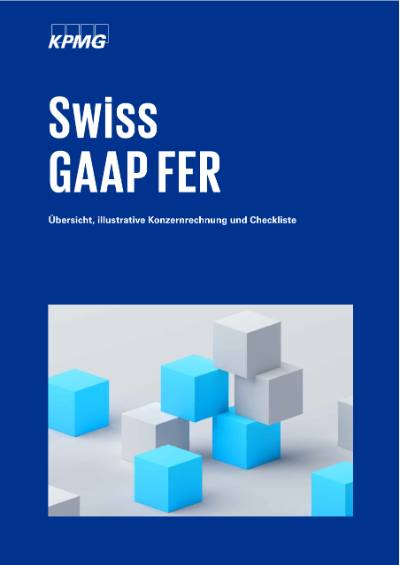Swiss GAAP FER provides companies with a framework for sound financial reporting. The standard is suitable for listed companies, groups with a national presence as well as small and medium-sized companies.
Taking into account the size of the companies, the Swiss GAAP FER are structured in modules (core FER, full Swiss GAAP FER, listed companies).
Industry-specific standards also cover the accounting of pension funds, insurance companies and not-for-profit organizations.
Small organizations (total assets of CHF 10 million, turnover CHF 20 million, 50 full-time employees) can limit themselves to applying the framework concept and six core standards (core FER).
Larger companies are required to apply all Swiss GAAP FER standards. In the case of a group, Swiss GAAP FER 30 “Consolidated Financial Statements” is also applicable. Listed companies must additionally comply with Swiss GAAP FER 31.
Swiss GAAP FER thought leadership
The application of Swiss GAAP FER standards is widespread in Switzerland. KPMG has now published the 10th edition of its Swiss GAAP FER brochure. The new edition provides the following information:
- an overview and summary of the standards and an outlook for ongoing projects
- an illustrative example of consolidated Swiss GAAP FER-financial statements
- a checklist for stand-alone and consolidated financial statements including Swiss GAAP FER 31 regulations
Swiss GAAP FER 31 regulates the following central areas for listed companies:
- share-based payments
- discontinued operations
- earnings per share
- income taxes
- financial liabilities
- segment reporting
- interim reporting
Our Swiss GAAP FER services
- Advice on choosing the appropriate accounting and reporting standard
- Support for the conversion of your stand-alone and consolidated financial statements to Swiss GAAP FER
- Clarification of issues regarding the implementation of Swiss GAAP FER
- Auditing of the stand-alone and consolidated financial statements prepared in accordance with Swiss GAAP FER
This publication offers both first-time and experienced users a guide to tailor-made FER financial statements:
How does our expertise benefit you?
- If you choose KPMG, you will also benefit from the fact that Prof. Dr Reto Eberle, as Chairman of the Foundation Board, and Dr Silvan Loser, as a member of the Executive Committee and the Commission, are involved at the very forefront of the FER activities. This ensures that they are well and truly informed about the content and latest developments of the Swiss GAAP FER standard and the resulting challenges for you.
- At our annual client event, we inform you about the latest developments in Swiss GAAP FER. In addition, you will have the opportunity to discuss specific Swiss GAAP FER accounting issues in greater depth in industry-specific workshops led by our experts.
Further information
Expert articles (in German)
- Rechnungslegung - Neuauflage des FER-Lehrbuchs
- Hyperinflation Accounting - Approaches under IFRS & Swiss GAAP FER
- New content and adjustments
- Pitfalls when preparing cash flow statements under Swiss GAAP FER
- Voting rights according to Swiss GAAP FER
- Swiss GAAP FER – overview of the scopes of action
- Revision of FER 30
- Treatment of cash-pool claims in the cash flow statement
- Reflection of cash flow hedges under Swiss GAAP FER
- Crypto currencies according to Swiss GAAP FER
- Acquisition of minority shares according to Swiss GAAP FER
- Step-by-step acquisition according to Swiss GAAP FER
Our experts
Contact our experts if you have specific questions about the Swiss GAAP FER accounting standard. We advise and support you with the introduction and implementation of Swiss GAAP FER.








